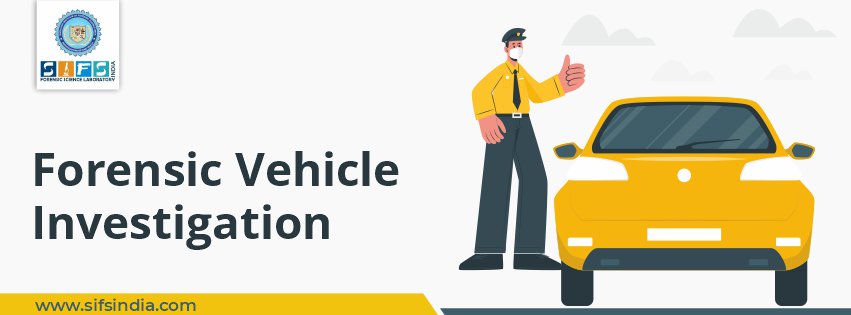A crime scene investigator or evidence recovery technician may be assigned for processing a vehicle or vessel during a forensic vehicle investigation. Even though that vehicle or vessel is not a primary scene in the investigation, it deserves the same level of scrutiny.
The primary purpose of a evidence recovery specialist, is to document and collect physical evidence.
The evidence discovered in the vehicle could be crucial to solving that particular case. The types of evidence that may be found in the car will be determined by the criminal act performed.
A vehicle burglary, for example, may give fingerprints that can be used to identify the person who broke into the vehicle.
A vehicle used in a homicide including the shooting, stabbing, or conveying of a victim, on the other hand, may produce a wide variety of physical evidence.
Processing a Vehicle Crime Scene
In the field, it's essential for the investigator to develop a systematic approach to processing the vehicle.
The first objective, like with any crime scene, is to acquire the information needed to identify the car and its contents.
The process starts with a comprehensive examination of the vehicle. An in-depth examination of the vehicle will enlighten the investigator or technician about the types of evidence that may be there.
Following the examination, the investigator must meticulously document the vehicle as observed.
A series of photographs portraying the car will be used to do this.
Start with the outside and photograph it from every angle: side, corner, front, back, tag, vin, decals, damage, and custom accessories.
The ignition region, the dash, the glove box, the instrument panel, the back seat area, and the trunk area should all be photographed from the front driver's seat, from each side with the doors open.
Following the completion of the photographs, a systematic search will be needed.
The systematic search is used to locate pieces of evidence that were missed during the initial examination.
For proper searching, the vehicle can be separated into portions (similar to an organized zone search pattern).
It shouldn't matter what part of the vehicle the investigator starts with; all that matters is that the investigator establishes the habit of starting from the same spot every time he or she analyses a vehicle.
When searching behind seats and other difficult-to-see areas, the investigator or technician should err on the side of caution if he/she doesn't want to put their hands being pierced by an infected needle or another object.
The investigator can check these regions with a small mirror and flashlight without risking themselves for exposure or injury.
If other pieces of evidence are found during the search, the investigator or technician can set up a series of evidence marking stands adjacent to all of them and take a series of photographs depicting the location and relationship of all the pieces of evidence discovered.
If the objective at hand is to find projectile trajectories and directions, the investigator can use string or dowel rods to trace the flight patterns.
It's important to remember that determining the flight trajectories of a projectile requires two (2) points of reference.
The major objective of using string or dowel rods is to demonstrate and document the projectiles' flight patterns in order to aid in projectile tracking.
The collection of evidence would be the next step in the procedure.
Typically, the investigator or technician should want to begin with the most fragile evidence.
The passage of time, exposure to the elements or environment, any movement, and, of course, inappropriate handling may make such evidence break to contaminate.
Swabbing samples of the steering wheel, inside door handle, and, of course, the driver's seat belt buckle would be an area to investigate with the new advancements in DNA.
Last but not least, any latent fingerprints must be manually examined.
The investigator or technician should check the common areas of the vehicle's exterior, working a border of about 6 inches wide around the sides, hood, trunk, roof support post, and windows.
If a tire is missing, common sense would also alert you to the areas of the fenders surrounding the wheel weld.
The door handles, rearview mirror, seat belt buckles, windows, and any other nonporous component on the interior will need to be examined.
A well-organized system of search would make difficult work easier and more error-free.

 July 04, 2021 - BY SIFS India
July 04, 2021 - BY SIFS India